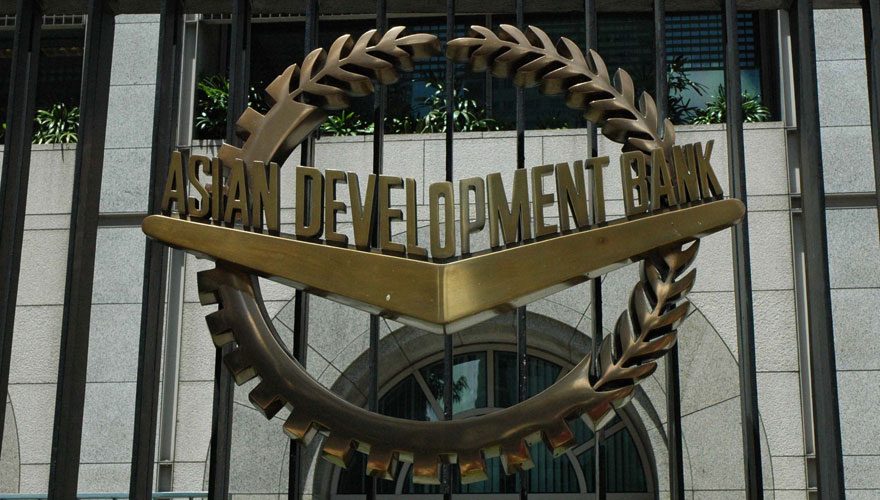Cambodia remains a nation divided – divided by lines separating the rich and poor, the urban and rural, the banked and the unbanked.
For the latest Cambodian Business news, visit Khmer Times Business
In May 2019, the World’s Bank’s economic update for Cambodia highlighted the disparity in economic development, with financial gains further widening the gulf between the haves and have-nots.
“The reduction in poverty during 2013-17 was less than during 2009-13, mainly because economic growth benefited the non-poor more,” the report reads.
“There are still many households that are only just above the poverty line and have limited ability to absorb shocks, even small ones. Any negative shock reducing consumption per capita by 2,000 riel (about 50 cents) would double the poverty rate.”
Just last year, the Oxford Poverty and Human Development Initiative contradicted official government figures on poverty by reporting – via a new metric for poverty measurement – that 37.2 percent of Cambodians live in multidimensional poverty, much of which is focused in rural regions, where it found 15.5 percent of people endured severe poverty, compared with just 1.5 percent of urban-dwelling Cambodians.
But even in Phnom Penh, the nation’s capital and arguably the most affluent city in the country, these statistics are visible. Luxury imported vehicles cruise alongside rusting bicycles laden with wares – the sale of which will determine the daily nourishment of the rider and his or her family.
International hotels cast long shadows over men, women and children flogging petrol stored in plastic bottles.
High-end restaurants whip up gourmet treats for customers spending more on a single meal than many Cambodians would spend on a week’s worth of food.
And this, we are told, is progress.
However, the wheels of progress turn slowly and change – of the scope and scale that is needed – cannot be expected to take place overnight.
Recognising this, the Asian Development Bank (ADB) has made significant progress in assisting the government to further develop policies that aim to ensure an even spread of economic empowerment.
Just last week, the ADB approved a $40 million loan targeting the Kingdom’s rural areas, impoverished households and the agriculture sector in a bid to promote sustainable development and financial inclusion rather than bartering.
This loan will build on the accomplishments of the Inclusive Financial Sector Development Programme (IFSDP) – a plan that began in 2016 and is aligned with Cambodia’s 10-year rolling Financial Sector Development Strategy (FSDS) series, the current being FSDS 2016-2025.
ADB supports five government agencies in accomplishing reforms under this financial sector programme – the Ministry of Economy and Finance (MEF), the National Bank of Cambodia (NBC), the Securities and Exchange Commission of Cambodia (SECC), the Ministry of Commerce (MOC) and the Rural Development Bank (RDB).
Speaking with Capital Cambodia, Benita Ainabe – the ADB’s Financial Sector Specialist (Capital Markets) for Southeast Asia – explains the history of the IFSDP. He says: “Subprogramme one provided the foundation for the government’s financial inclusion and financial stability initiatives. Some of the subprogramme ones’ highlights include the creation of a formal working group to develop a gender-responsive national financial inclusion strategy, the launch of financial literacy campaigns and the development of a basic framework for cross-sector supervision.”
The aims of financial inclusion are to grant basic access and usage of financial services as outlined by the World Bank’s Universal Financial Access (UFA) goals. It envisions that by 2020, adults around the world will be able to have access to a transaction account or electronic instrument to store money and send and receive payments.
Financial access, the World Bank argues, is the first step towards broader financial inclusion, where individuals and firms can safely use of a range of appropriate financial services, including savings, payments, credit and insurance. As of 2017, 78 percent of Cambodians remained unbanked.
While the ADB has been working with the Royal Government of Cambodia since 1999, the recently completed second phase of the IFSDP has built on the previous successes of the ADB’s work.
“Some notable achievements supported under subprogramme two were the national financial inclusion strategy, key legislation namely, Trust Law, e-Commerce Law, and Consumer Protection Law, and incorporation of financial literacy in the school curriculum,” says Ainabe, who adds that consumer protection with regards to financial services has also been a large focus.
The programme helped to introduce microfinance regulation, modernising payment infrastructures along with cooperating on anti-money laundering and combating the financing of terrorism.
“Microfinance institutions (MFIs) are an important subsector of Cambodia’s financial sector, accounting for 15 percent – $5.03 billion of total financial sector assets,” explains Ainabe.
“MFIs have recently experienced accelerated credit growth. This, together with the increasing use of financial technology [fintech], requires strengthened regulation and supervision.”
The vision of MFIs lifting Cambodians out of poverty is perhaps one yet to be realised but, through more stringent regulations, the Kingdom is slowly waking up to the potential nightmare that an over-indebted, under-skilled workforce could create.

Asian Development Bank Financial Sector Specialist
“A numbers of microfinance institutions have a strong focus on reaching unbanked, low-income households, especially in rural areas,” notes Kea Borann, president of the Cambodia Microfinance Association (CMA).
Last year 97 percent of all businesses in the Kingdom were made up of micro or small-to-medium enterprises, according to the Ministry of Industry and Handicraft.
The ministry also reported that 95 percent of them were not properly registered and that in excess of 50 percent of those businesses struggle with financial and labour constraints.
Access to finance is therefore a key element of inducing growth for such a large majority of businesses, but with more than 2 million Cambodians owing money to MFIs and numerous warnings from the International Monetary Fund and the World Bank, critics argue that more needs to be done to slow the growth of credit among low-income families.
“Almost 50 percent of clients who borrow from MFIs borrow less than $1,000. Please also note that the loans from MFIs are generally lent to households with about three members who earn an income,” says Kea.
As of 2017, the CMA agreed to cap interest rates at 18 percent, whereas previously they had been capped at 30 percent, although this did encourage certain lenders to actually raise their rates to the height of the new cap.
This was a fresh attempt to slow down the growth of MFI credit in Cambodia, following a 2016 agreement not to lend to borrowers who already had two relationships with MFIs in order to prevent new debts being used to pay off old ones.
Ainabe of the ADB notes that the IFDSP “supported reforms that improved institutional arrangements across key government agencies required for effective crisis management and a deposit protection scheme to promote depositor confidence amid the rapidly expanding bank and MFI deposit base”.
Stronger regulations, coupled with an adoption of fintech solutions within the financial sector, she hopes, will minimise the cost of credit as well as provide formal, regulated and secure access to finance for the rural poor and microenterprises, which, she fears, may resort to informal credit providers. This, she argues, would ultimately result in over-indebtedness of poor households.
But measuring success on such a large scale becomes difficult, as many metrics compete for the creation of the bigger picture.
Kimlong Chheng is director of the Centre for Governance Innovation and Democracy of the Cambodian think-tank, Asian Vision Institute. He says: “In general, there has been a general increase in financial literacy over the years because of MFIs, NGOs, and development agencies. While the aim of the policy is to increase financial access, inclusivity and literacy, the impacts and outcomes can be difficult to assess,” he says.
“There are those who have benefited and those who have been unsuccessful in utilising the loans. To be fair, the policy is good but it cannot lift all borrowers out of poverty.”
With the ADB’s work far from over, Ainabe hopes to build on the progress made towards a Cambodia that is less reliant on microloans and offers an accessible financial sector that can support people in the development of their businesses.
Ainabe says: “The government has plans to implement a number of initiatives, some of which are already under way, including, improving banks’ capital adequacy ratios, a phased implementation of a capital conservation buffer, a new liquidity risk management framework, improvement of banks’ loan classification and improvement of the supervision of MFIs.”




